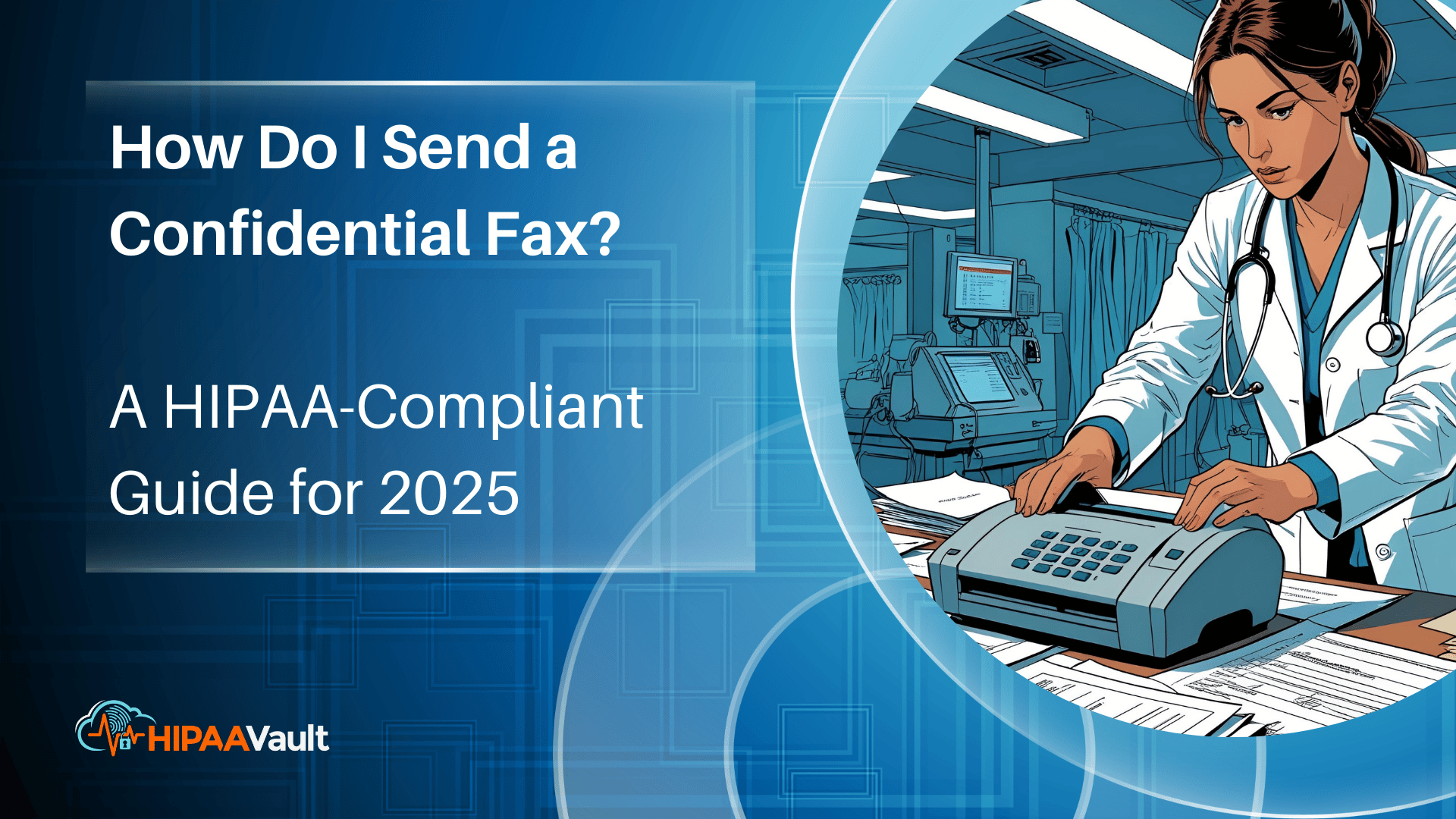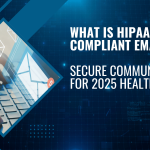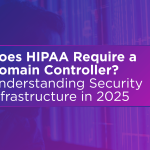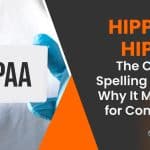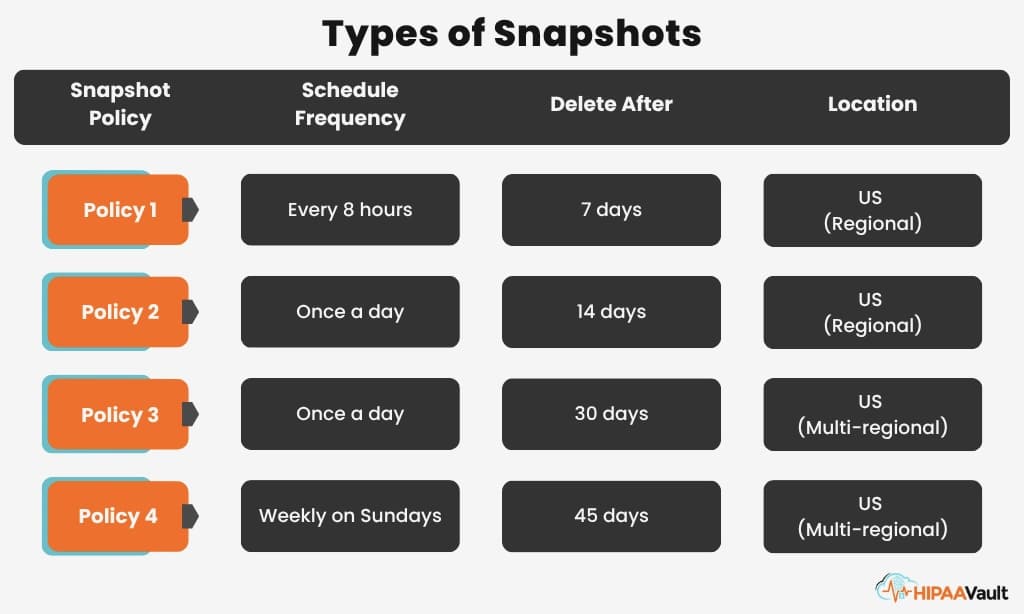Faxing may sound outdated in a world of cloud platforms and digital workflows. But in healthcare, it’s still widely used to transmit sensitive patient information. That makes the question all the more urgent: how do I send a confidential fax without violating HIPAA?
Healthcare providers, administrators, and business associates ask this often—especially when balancing legacy technology with modern compliance demands.
Need HIPAA-compliant faxing now? → Talk to a HIPAA expert at HIPAA Vault
Why Faxing Still Matters in Healthcare
Despite the rise of digital communications, faxing persists as a secure and familiar channel for transmitting medical records, referrals, and lab results. It’s widely accepted across healthcare systems and doesn’t require patients or partners to install special software.
But traditional faxing methods can create serious HIPAA compliance gaps if not configured correctly. Sending unencrypted documents over analog phone lines or storing printed faxes in unsecured locations opens the door to privacy violations.
That’s why secure, compliant faxing matters. Whether you use analog machines, digital fax software, or cloud-based solutions, you must implement administrative, technical, and physical safeguards to protect PHI.
Talk to our compliance experts now → Contact sales
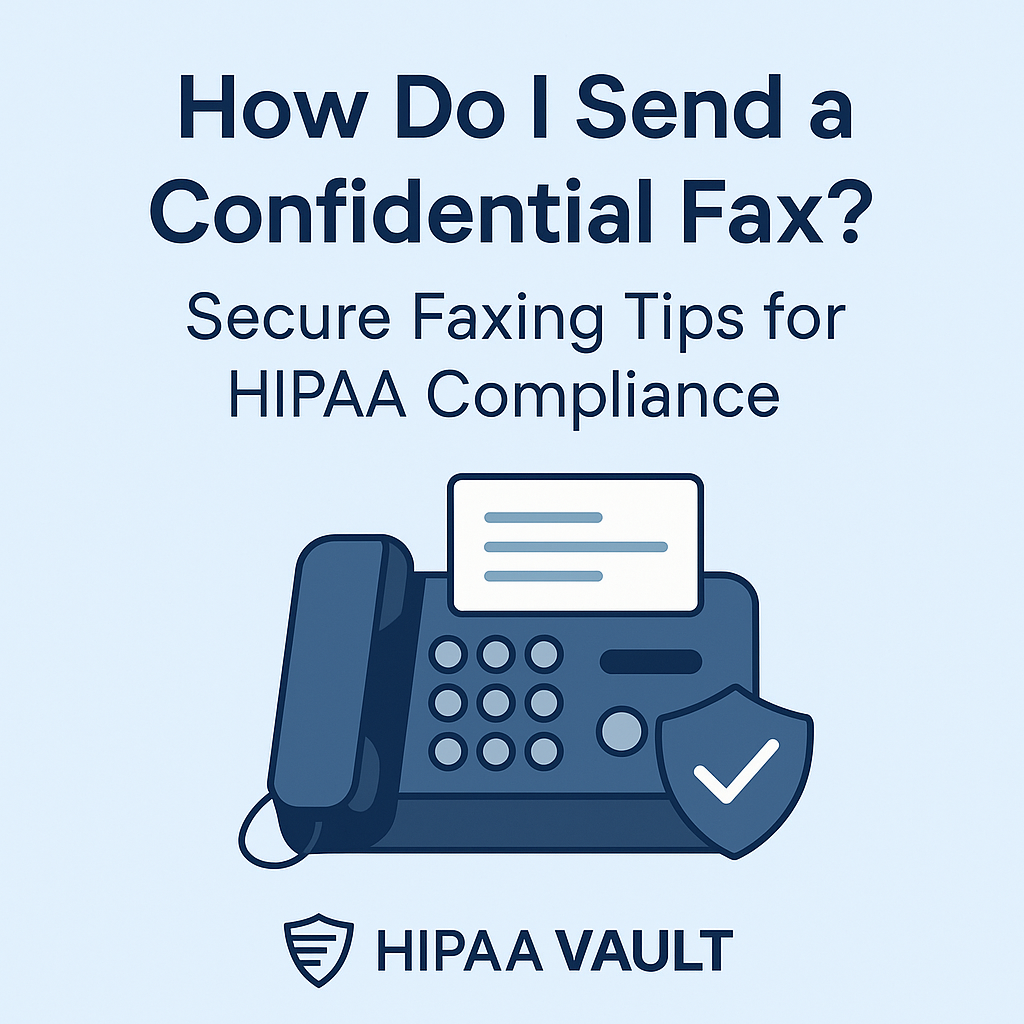
What Makes a Fax HIPAA Compliant?
HIPAA doesn’t ban faxing. But it does require that covered entities and business associates implement appropriate safeguards for all forms of electronic PHI transmission—fax included.
To be compliant, a fax process must secure access on both the sending and receiving ends. You must confirm the recipient’s identity and ensure faxes are sent to the correct destination.
Digital fax services should also use encryption. This includes TLS 1.2+ for data in transit and AES-256 for data at rest. These safeguards help prevent interception during transmission or unauthorized access afterward.
Administrative policies must define how staff use fax systems. This includes who is allowed to send or receive faxes and how to respond to errors or misdirected messages.
Audit trails are also critical. You must track who accessed or sent documents, when, and where—helping to establish accountability and support breach investigations if needed.
According to the Department of Health and Human Services (HHS), faxing is permissible under HIPAA, but only if the right controls are in place (HHS.gov, 2022).
How Do I Send a Confidential Fax?
To send a confidential fax under HIPAA, start by reviewing your current setup. If you’re using a physical fax machine, make sure it’s in a secure location with limited access.
Use a cover sheet that omits PHI but clearly labels the message as confidential. Confirm the recipient’s number before sending, and notify them so they can retrieve it immediately.
For digital faxing, use a HIPAA-compliant platform. These services use encryption protocols to protect data during transmission and at rest. They also require user authentication before sending or accessing messages.
HIPAA Vault’s secure cloud faxing solution integrates with existing workflows and adds all required compliance layers—without needing specialized hardware. This means healthcare teams can transmit PHI safely while meeting both legal and operational demands.
Learn more about HIPAA-compliant faxing → HIPAA Vault Secure Email & Faxing
HIPAA-Compliant Faxing Methods in 2025
Not all faxing methods are equal. Analog fax machines over plain old telephone service (POTS) lack encryption and audit capabilities. That puts PHI at risk.
Digital fax software offers greater control but requires you to configure encryption and access restrictions manually. Without proper oversight, gaps in compliance may still exist.
Cloud-based fax services offer a modern alternative. With TLS and AES-256 encryption, detailed logging, and automated delivery confirmation, these platforms provide security out of the box.
At HIPAA Vault, our HIPAA-compliant digital faxing services offer an easy path to secure faxing. We handle infrastructure, compliance documentation, and 24/7 monitoring—so you can focus on care delivery, not tech management.
Need secure digital faxing? → Explore HIPAA Vault’s Fax
Choosing the Right HIPAA Fax Provider
Not every vendor is HIPAA ready. Look for a provider that offers a signed Business Associate Agreement (BAA). Without one, you’re assuming full legal responsibility for how PHI is handled.
Encryption must be standard, both for transmission and storage. Verify that access is restricted using user IDs, passwords, and ideally, multi-factor authentication.
Also, ensure the platform provides audit logging. This includes timestamps, sender and recipient details, and delivery confirmation—necessary for both compliance and troubleshooting.
HIPAA Vault includes all these features in our fax and email service plans. Our clients receive turnkey compliance, a signed BAA, and technical support from HIPAA-trained experts.
Start faxing securely today → Get HIPAA-Compliant Faxing from HIPAA Vault
Final Thoughts: Is Faxing Still Safe in 2025?
Yes, faxing can be safe in 2025—but only with the right protocols in place. Whether you’re using analog machines or switching to a digital fax platform, HIPAA compliance must be the foundation.
Healthcare organizations should not rely on outdated processes or assume compliance by default. Secure, encrypted faxing supported by audit logs and proper access control is a must.
HIPAA Vault helps simplify this journey. Our managed solutions provide secure email, cloud fax, and file transfer—all designed with HIPAA in mind.
Don’t take chances with PHI. Learn more
FAQs: HIPAA Faxing (2025)
Q: Can you fax PHI under HIPAA?
A: Yes, faxing PHI is allowed under HIPAA as long as administrative, technical, and physical safeguards are in place. That includes encryption, access control, and audit trails.
Q: Is email or fax more secure under HIPAA?
A: Both can be secure, but only when encrypted and properly managed. Faxing without encryption or digital access controls can pose significant risks.
Q: Does HIPAA require encryption for faxing?
A: For digital faxing, yes. While HIPAA treats encryption as “addressable,” the risks of unencrypted data transmission make it a required best practice. Learn more at HHS.gov.


